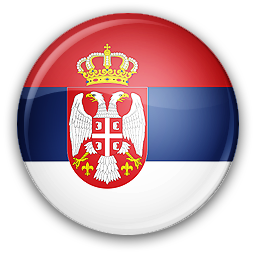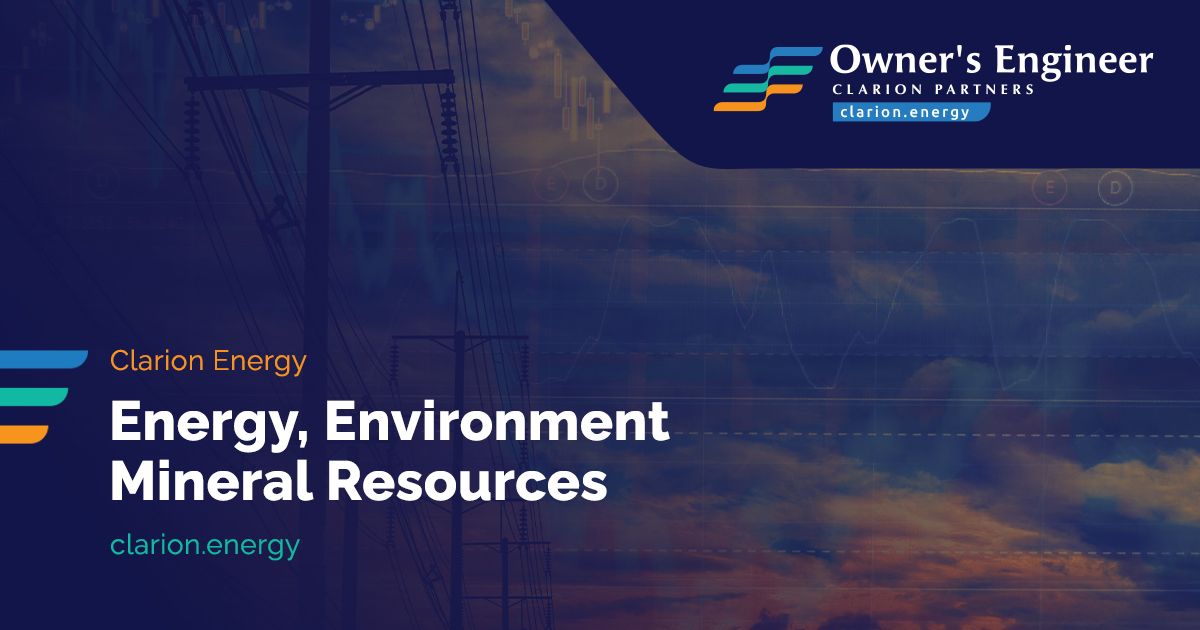MET Croatia Energy Trade is a new player on the Croatian market, who has already stood out following a lease of significant storage capacity in the Okoli gas storage facility. This not only enables it to offer a safe and flexible supply to customers, but also significantly strengthens its position in the regional race. The company has already signed several agreements; however, in practice they are facing difficulties concerning supplier change, charging balancing energy and transport capacity tenure in storage lease. “Such advanced legislation is not in compliance with the technical, technological, human and financial capacities of our market. The process of switching supplier was ambitiously conceived but hardly feasible in practice,” said Goran FRANČIĆ, BSc. ing, CEO of MET Croatia Energy Trade.
Can you briefly introduce MET Holding and explain the ownership structure because the public generally perceives you as MOL’s company?
MET Group is the biggest independent gas trader and natural gas supplier in Central and Eastern Europe (CEE), with subsidiaries in eight European countries. We are present in eleven international natural gas markets, either through operating companies that do business in these markets, commercial operations on the exchanges of gas and electricity, or through lease of transport and storage capacities. In 2013 the company launched power trading activity, and started with oil trading through its newly established London office in 2014. MET Group has been achieving continuous growth since its establishment and is well-positioned on the energy market, having great prospects for expanding its energy trading activities to other markets and commodities. The total annual revenue of the Group is above EUR 3 billion. MET was created when the gas business of MOL was separated in 2007, but in the process of spin-off, a majority stake was sold to two investment funds, while MOL now has a minority stake. MOL is only a financial investor – without influence on decision-making and strategy related issues. MET is not incorporated in the MOL Group, nor is its balance sheet accounted for in MOL’s balance sheet. MET Holding as an organization was formed in 2012 and headquartered in Zug, Switzerland, from where all operations and decisions are made, and member companies of the holding are working on the principle of national sales in Slovakia, Hungary, Romania and Croatia. Trading floor − MET International is also a sister company, a member of the Holding, through which all of the energy trade takes place. MET Croatia Energy Trade was established in late 2013 and is 100 % owned by MET Holding. In the meantime we obtained a permit for the activity of trade and supply of natural gas, and at the beginning of this year we were registered as a balance group leader. In addition to the gas business, in a few countries the Group is also active in trade and supply of electricity.
Wider public first heard of the company MET Croatia Energy Trade when it was announced that the company has purchased a significant amount of INA’s gas stored in Okoli. What are your ambitions in this market?
MET Group is continuously seeking synergies among the markets where it operates. The primary strategic goal of MET Croatia is to supply small and medium-sized consumers in the distribution and transmission system, but of course, we will be present in the wholesale market, where other gas suppliers of end customers buy. That is the very reason for buying local storage capacities that will help us develop business in Croatia, and will guarantee to our end customers the security and flexibility with respect to demands in winter and summer consumption. However, at the regional level we will also gain an ace in market competition. For instance, Slovenia has so far partly depended on storage capacities in Croatia, but this is a question of operations at the Group level. Very few customers continuously throughout the year spend the same amount of gas, and storage facility enables us to meet all their needs, regardless of their summer minimum and winter maximum. Moreover, for supply of natural gas for our needs we have obligations toward the contractor, even if it is a sister company that buys gas in the neighboring markets. We are registered as balance group leader, which allows us to offer flexibility to our partners; taking of their surplus gas, or delivery when greater quantities are needed. We have already traded on virtual points.
You have signed a number of agreements. How is your business doing?
This is just the beginning. One and a half years ago the new energy sector legislation gave us the possibility to do business on open market, which we saw as a signal to begin operations in Croatia. I am sure that this market, which for a last few years fell in volume, will start to grow as soon as the economy recovers and it establishes connection with other markets. So, now is the right time to start doing business. Our first results will be visible in late summer, when the season of contracting for the next gas year comes to pass. We expect that in the medium term, within three to five years, we will become the second or third supplier in this market. Our plans are ambitious and the owners gave us the tools to achieve them. We already have eight employees and have the support of the service company and MET Holding.
Can you make some comments on the current state of the gas market?
Market opening is a new process for all participants, not just for suppliers, but also for customers, which will benefit the most. The customers should be aware of changed conditions, but also of an active role that they now must undertake in the market. This means, inter alia, that they need to set such conditions in tenders that will meet their needs. It seems to me that we all still have to put a lot of effort into educating the end customers. Large companies have already realized the benefits, but small and medium ones have not yet recognized the benefits of a liberalized gas market. This is positive because of a greater market transparency and ultimately lower price for the end customer, but everyone should be careful and here I want to primarily invite legislators to adapt implementation acts to our market conditions. Regulation fully opened cards in a short period, and both customers and suppliers need to adapt to these drastic changes. The laws are adequate and compliant with the European Directive, but even after a few months one can see that our implementation regulations are not fully compliant with the current situation on the gas market. Simply put, such advanced legislation is not in accordance with the technical, technological, human and financial capacities of our market.
You are not the only one who thinks so. Can you cite an example of the difficulties that you face in implementing the new regulations?
For example, the current procedure for changing of supplier is extremely complicated and time-consuming with a lot of steps that everyone in this chain should complete; a new supplier, an old supplier, the transmission and distribution system operator, and market operator. Practice has shown that the process, bearing in mind the situation on the gas market, is ambitiously conceived, but difficult to implement in practice. We changed our supplier and we know that. We have already suggested to regulator in writing some regulatory changes and we got an answer that in the next amendment of regulations we will be included as other interested public. Also, one of the problems that we encountered is related to the lease of storage capacities. Storage year begins on April 1 and is not in accordance with the gas year that begins on October 1. It is stipulated that the tenant must lease storage capacities on the entry and exit points of the system connected with the PSP in accordance with the storage capacity, which is logical. However, the interpretation is that as of April 1, after which the storage capacities are leased, adequate inbound and outbound transport capacity should be leased, regardless of the fact that this is a period of gas injection. So gas is not off-taken, but we are obliged to have a maximum input capacity, which is absurd. Moreover, the lease is only possible on a monthly basis, and we now have to lease under less favorable terms inbound transport capacity, which we definitely will not need until October 1. We have proposed that in the first six months of storage in open market the possibility should be given of leasing capacity on an annual basis or at least it should be included in the price of storage. On the other hand, at the end of the lease term of transport capacities, the last six months in storage year, after the winter season of withdrawal of gas from storage we will still have leased and paid transportation capacity that we will not need, because we will no longer have our gas in storage! The problem is that the cost of transport capacity burdens a final gas price for customers. Obviously there is a mismatch between the two operators − operators of gas storage and transmission system operator, and such a system is approved by the HERA. The price of service, when the user does not need it should be the smallest possible, so that it does not spill into the final price paid by customers, as it is happening at the moment. The purpose of the tariff system and liberalization is that the regulated services become cheaper, not more expensive and thereby actually encumber the final price of gas.
Are you having any difficulty with the energy balance?
The principle of balancing energy and penalties for false nominations is completely all right. We adopted regulations stipulating payment of the balancing energy, but not the methodology by which this can be performed effectively. In order to carry out the payment for energy balance, we should have standard consumption profiles in the implementation part. We have 12 tariff models in the distribution, but none of them has a standard profile of consumption, and distributors are allocating proportionally. For example, there is no prescribed methodology for allocating the daily amounts, according to the daily nominations for customers under one million m3 per year of gas consumption, for which the distribution system operator is under no obligation of daily measurements. Someone must determine the daily allocation, and we have neither daily measurements nor standard profiles that could tell us how to calculate energy balancing. Today, every operator of a distribution system uses its methodology in allocation of daily amounts per daily nominations, on the basis of which HROTE will charge energy balancing. Given the previously mentioned difficult situation on the gas market, for now we cannot expect that in the near future all buyers will be equipped with meters that have remote reading and data transfer, this is not the case even abroad, but at least there are defined standard consumption profiles, according to which daily amounts are allocated. There are other such examples.
Similar problems with the change of supplier and charging of balancing energy exist with electricity. In this regard, what is your view on the government’s decisions to postpone for three years liberalization in the supply of gas for households?
Business climate in the gas market should stabilize. If complete liberalization, including the sector of households, had been made, I don’t know who would have entered into this segment. For the same reasons, we have a less optimistic look at the market of small and medium-sized companies, as we encountered a number of problems in practice that are not defined in the implementing regulations. Uncertainty turns away suppliers from entering this segment. In this context, I can understand why at this moment households market has not opened.
You said earlier that you have an interest to enter into the segment of electricity supply, where there are also objective difficulties. What are your plans?
MET Group is engaged in electricity trade for a year now. At the trade level we achieved good results, and the supply just started in Slovakia, Hungary and Romania. We have the approval from shareholders to enter into electricity business. Now we are in the process of additional registration and the licensing will follow, which could be completed by the end of the year, so that at the end of this year or beginning of the next year we could enter into business of electricity supply. Electricity market in the region and in Croatia is better organized and simpler than the gas market, and therefore we expect an easier entry into the market, although we have well-established competition. End customer needs both gas and electricity, and if you already have a relationship with the customer for one form of energy, you will have an advantage if we can offer another form of energy. At the level of the Group we are thinking about some other activities in the field of energy. Last year we bought one trading company in London, which deals with oil and petroleum products. So far it is just trading without supply, which involves infrastructure. LNG and LPG are also new potential activities of the Group as a whole, and Croatia is interesting considering the possible construction of the LNG terminal on Krk.
Politics and profession insist on numerous gas projects, such as the Adriatic-Ionic gas pipeline and LNG terminal on Krk, and a tender for oil and gas exploration in the Adriatic has already been announced. Ambitions are immense when it comes to positioning Croatia as an energy force in this part of Europe. What is your view on these projects?
I would be very happy to see the implementation of these projects, because we have a chance to succeed since we are geographically in the intersection of several regions of Central and Eastern Europe and these projects could be a good interconnection. We have developed gas infrastructure to be linked with Slovenia and Hungary and all of these new projects would not be possible if we were not already well connected with neighboring countries. It is a fact that the interconnection with Hungary opened this market. It remains to link to the southern corridor, which comes from the Caspian region and the decisions that guarantee a new source of gas have already been made. Adriatic-Ionic gas pipeline is a potential project that can put Croatia into a central role in this region, but we must not forget that it includes four different states with all their peculiarities. The realization of this project is not just a matter of the transmission system operator, but also of those who will lease these capacities and of owners of gas that will flow through them. The regional market is relatively small, but the possibility of transit makes benefit for the entire region from new sources of gas. For example, those who sell the gas in Bosnia will be in an entirely different position when they know that the other side there is someone else, the other source of gas. In short, everyone will have much easier time negotiating better terms. LNG is an ambitious project, both financially and in terms of the amount of gas that could be sold and always had a broader focus. LNG terminal has the opportunity to affirm itself and move on. Behind both projects, entities must stand that have gas and have the market and which will see the interest to rent infrastructure or invest in it, only then will the project be feasible. To get to that level, it is necessary to solve issues of permits, regulations and exemptions from third party access, or an exemption from the tariff system all the way to ACERA and the European Commission, which the South Stream is facing now. Finally, there is the business aspect of the issue of cost-effectiveness. All this procedure is time-consuming and laborious task and it is not done in full in any of these two projects, and will be a requirement for someone to come who is interested in a partnership or lease of capacities.







